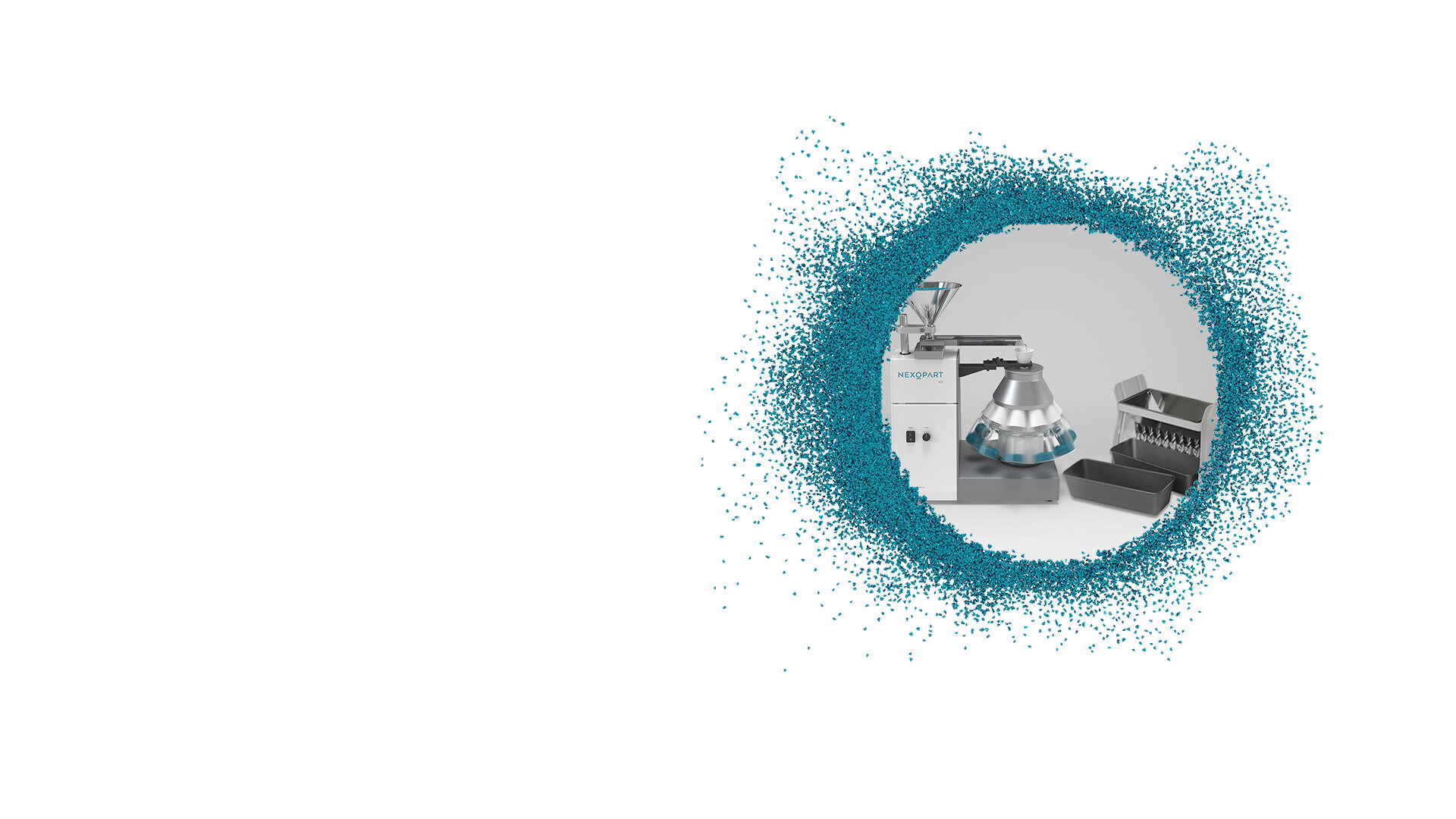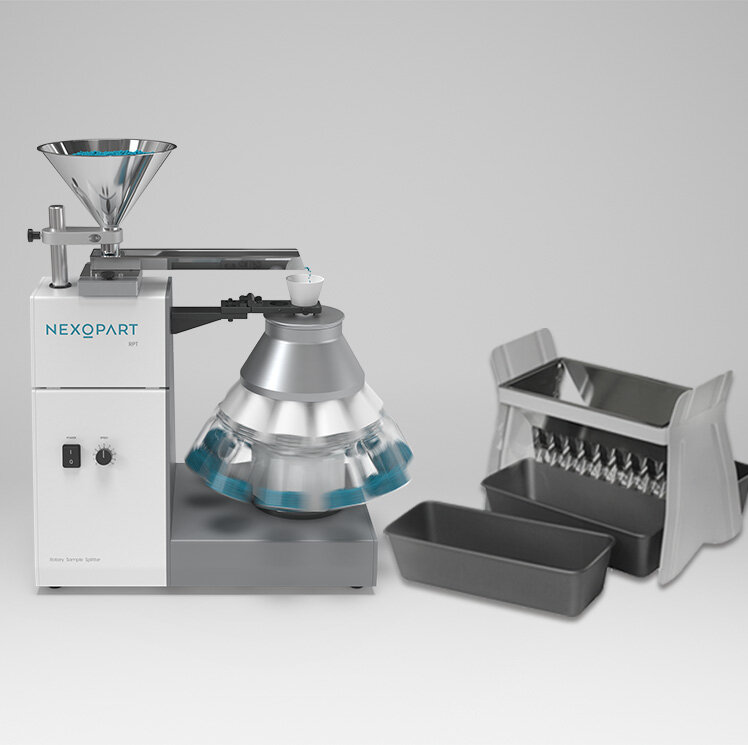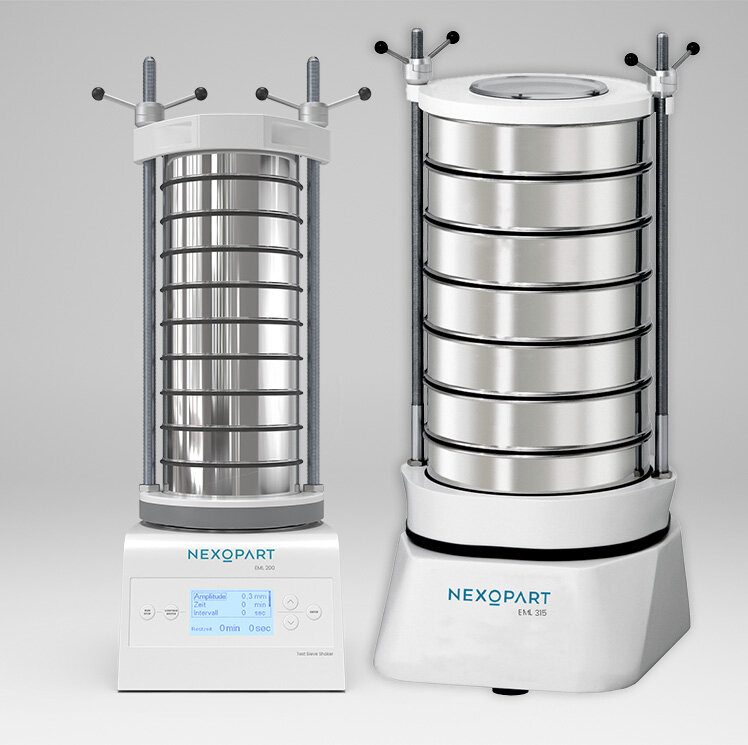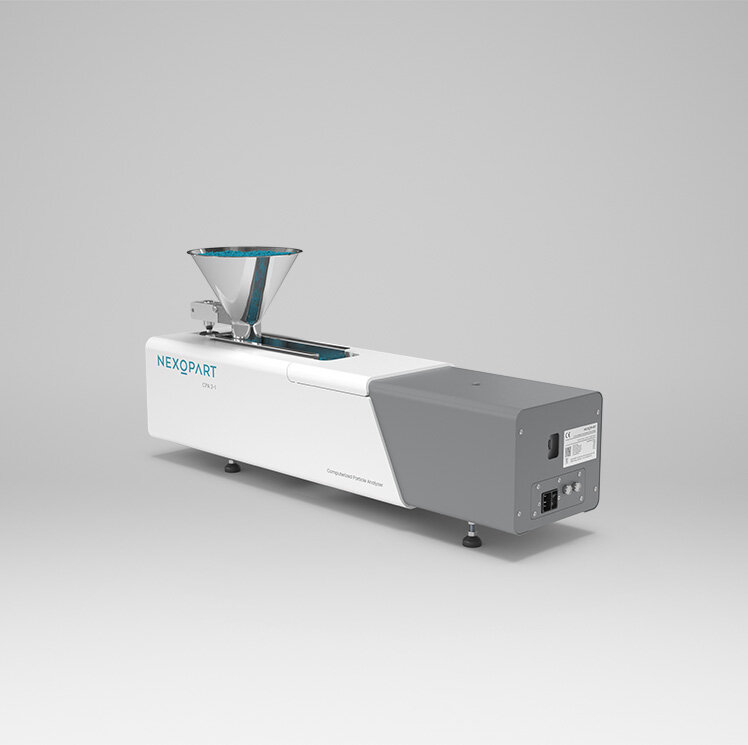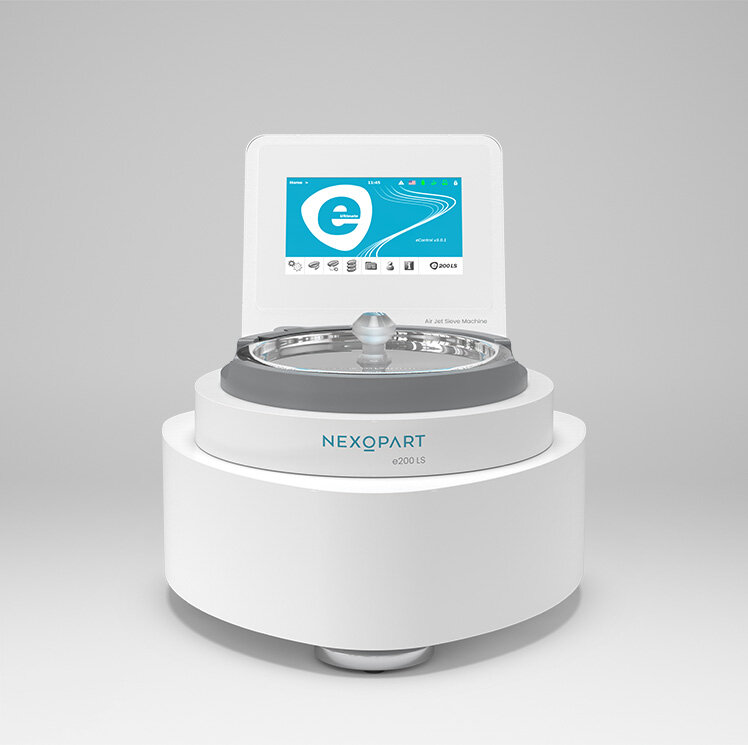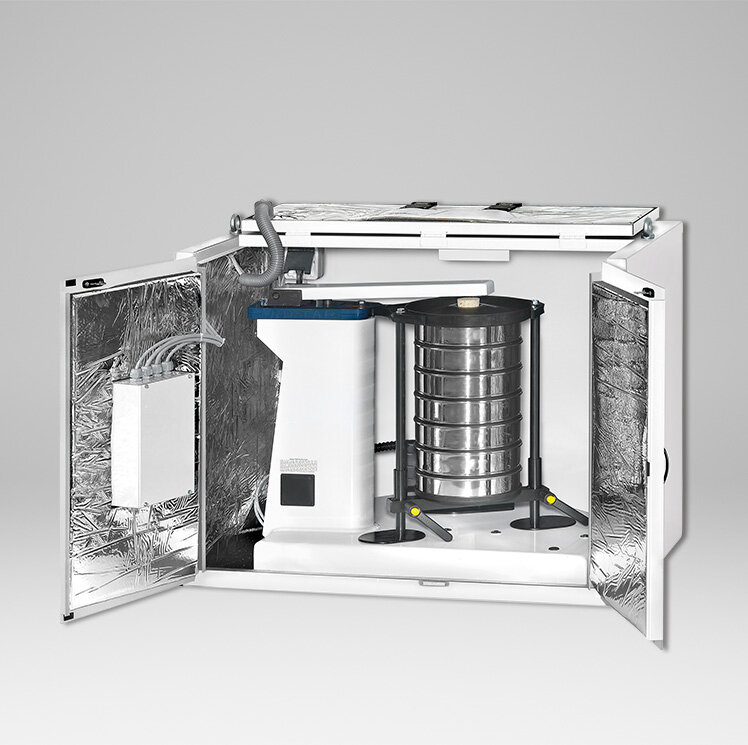
Optimized for the future
NEXOPART sample dividers are among the most modern and accurate laboratory instruments on the market. With simple operation, exact dimensions and manufactured from the highest quality materials, they are part of the range of the most modern laboratories in the world. We offer sample dividers for different sample quantities and sample sizes. Depending on your requirements, NEXOPART offers two different sorting methods for large or very fine sample quantities. Select the right product line for you here:
The NEXOPART sample divider for large samples
NEXOPART sample dividers are among the most modern and accurate laboratory instruments on the market. With simple operation, exact dimensions and manufactured from the highest quality materials, they are part of the range of the most modern laboratories in the world. We offer sample dividers for different sample quantities and sample sizes. Depending on your requirements, NEXOPART offers two different sorting methods for large or very fine sample quantities. Select the right product line for you here:


For small samples or high-precision dividing – The NEXOPART rotary sample splitter
Do you need small, representative sample quantities of solids or must to divide poorly flowing materials with utmost precision? Then the NEXOPART rotary sample splitter is exactly the one you need for your laboratory facilities. These splitters achieve samples in ratios of 1:8, 1:10, or 1:30. You get the best possible and most accurate sample division with ease.
